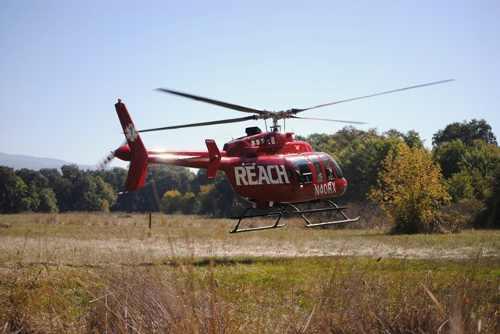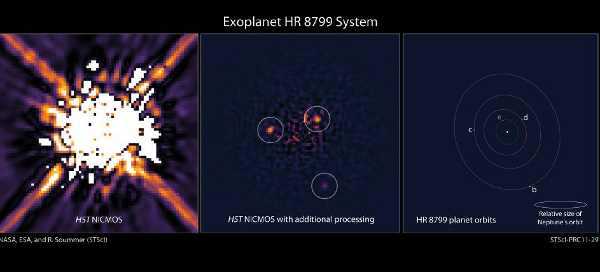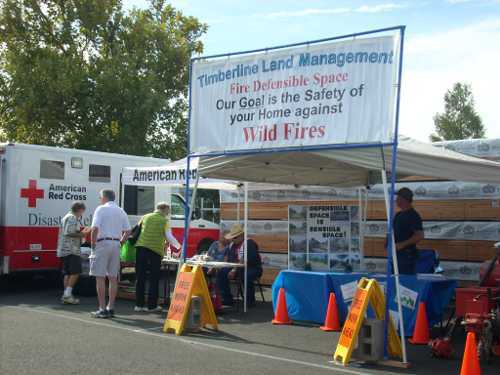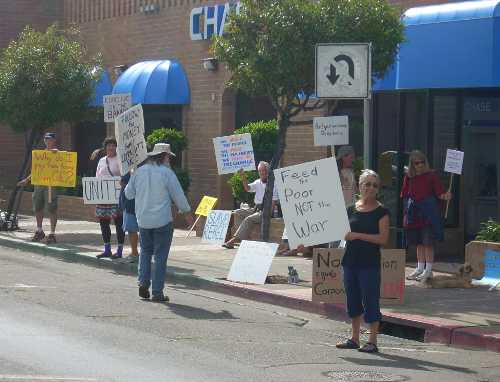CLEARLAKE, Calif. – On Friday the preliminary hearing of the three men accused of killing a child and wounding five others in a June shooting wrapped up as the prosecution and defense presented closing arguments.
Over eight days stretching across three weeks, District Attorney Don Anderson has presented evidence in an attempt to link three men – Clearlake Oaks resident Paul William Braden, 21, and Orlando Joseph Lopez, 23, and Clearlake resident Kevin Ray Stone, 29 – to the June 18 attack that killed 4-year-old Skyler Rapp.
The three men are accused of driving to the Lakeshore Drive home of Desiree Kirby and boyfriend Ross Sparks and their children, and shooting into a crowd of friends gathered in the yard late at night.
The little boy was hit and died at the scene. Kirby was seriously wounded and has ongoing health issues; also wounded were Sparks and his younger brother Andrew, as well as family friends Ian Griffith and Joey Armijo.
Braden, Lopez and Stone are charged with murder, mayhem, several counts of attempted murder and assault with a deadly weapon, and numerous special allegations such as use of a firearm for the incident, which Clearlake Police have said was the worst single shooting in the city's history.
Before he invited the closing arguments to begin, Judge Stephen Hedstrom allowed Stone's attorney, Komnith Moth, to finalize his arguments on an objection he raised earlier in the proceedings regarding the admissibility of a July 1 interview that police conducted with his client.
Clearlake Police Det. Tom Clements and Det. Tim Alvarado traveled to the Sonoma County Sheriff's Office to interview Stone early that day. He had been arrested in Santa Rosa nearly two weeks after the shooting.
The 31-minute videotaped interview was presented during testimony on Thursday.
Moth argued that Stone had invoked his right to legal counsel during the interview, and that the statements he made to police therefore shouldn't be allowed into evidence.
Hedstrom found that Stone understood his rights, and that he clearly waived his rights and spoke willingly to the detectives for about the first half of the interview. “Clearly if you can waive a whole, you can waive a part,” said Hedstrom.
Hedstrom said it was clear Stone, in his interview with police, was seeking a deal to prevent him from being prosecuted.
However, Moth got part of what he wanted.
When asked about what specifically happened at the shooting scene, Stone refused to discuss specifics. From that point on, as Clements and Alvarado continued to press him for details, Hedstrom ruled the interview was inadmissible.
The roots of the conflict
In his closing arguments, Anderson said the foundation of the conflict could be traced to a June 9 fight at an adult school graduation in Lower Lake involving Josh Gamble, a cousin of the Sparks brothers, and several members of the “Avenue Boys,” or “Ave Boys,” a local gang believed to be associated with the Norteños street gang, according to previous testimony.
Gamble testified on the first day of the preliminary hearing that he and Armijo were assaulted by the group, and that he was hit in the face with a pipe by Leonardo Lopez, Orlando Lopez's younger brother.
A few days after that fight, Kirby confronted Leonardo Lopez at Walmart about the fight, which Anderson said “added fuel to the fire.”
He said the situation heated up further on June 18 due to threats texted to Ross Sparks from Orlando Lopez's phone, and from a phone argument between Braden and Gamble's cousin, Crystal Pearls.
The threats were being exchanged at a time when Orlando Lopez and Braden were reportedly at a party at the 16th Avenue home of Leonardo Lopez and his girlfriend, Ashli Athas, which Anderson said was attended by several Avenue Boys.
Braden and Orlando Lopez allegedly left the party and returned with a shotgun, which Braden sawed the handle off of before leaving later in a car driven by Stone. Anderson said Stone became involved in the plan and retrieved a gun from his apartment. Stone's girlfriend, Leighann Painchaud, told police she saw Stone emerge from their home with some kind of firearm under his jacket.
Anderson said that showed premeditation, as did the way the men are alleged to have parked away from Sparks' residence, walking through his neighbor's backyard and shooting over the fence and through a gap caused by missing boards, then fleeing.
In building the scenario, Anderson said all three men were armed. Based on witness statements, the weapons believed to be used included two shotguns, a .22 rifle and a 9 millimeter handgun.
Anderson alleged that Lopez told another jail inmate that he took part in the shooting, claiming that he shot the little boy “almost in half.” Lopez also later claimed Stone killed the child.
“I think there's sufficient evidence that these defendants were there doing the shooting, it was premeditated and they shot into a crowd,” said Anderson.
He added, “They killed Skyler Rapp,” and injured the child's mother, who has injuries that more than likely will leave her disabled for the rest of her life, said Anderson.
Looking for the Avenue Boys
In their closing arguments, the three defense attorneys pointed to what they argued were big holes in the prosecution's theory in the case, and questioned the credibility of key witnesses.
Rhoades – representing Braden – said the justice system needs to make sure the right people are punished for the crime, and that it isn't just a matter of a blanket being thrown over a lot of people.
Rhoades looked at the disparity in witness testimony, zeroing in on Athas, who initially told police in two interviews that Braden wasn't at her home the day of the shooting. In a third interview she said he was there, and that she had previously lied due to being threatened. But Rhoades said the threats she offered were hearsay, and came after the first two interviews with police.
He also questioned statements given to police by Dena Smith, the neighbor of Kirby and Sparks, who did not take the stand but whose statements were related on the stand by Alvarado. Smith claimed to have seen Braden and a female through the 11-inch gap in the fence between Sparks' home and his neighbor's from 30 feet away in low lighting.
Stone and Painchaud later would be arrested in Santa Rosa after fleeing. But Rhoades said of his client, “Mr. Braden was arrested at home. That's where he was. He didn't go anywhere. He had no reason to run.”
Rhoades also took issue with the changes in Lopez's story to police, questioning Lopez's account of holding shotgun shells for Braden in the car on the way to the shooting as a way to explain why his fingerprints would be on the shells. He said Lopez has offered “every possible variation” of what could have happened.
He said the only evidence of Braden's involvement was offered by Stone and Lopez, as Braden made no admissions in the case.
Rhoades said Athas' testimony was clearly biased. “We can't put a firearm into Mr. Braden's hands unless we believe Ashli and the two defendants.”
The evidentiary requirements of a preliminary hearing are far lower than a trial, said Rhoades, adding if they were at trial Braden would be walking out completely exonerated.
Moth said Stone had no known motive for committing the crimes, pointing out that the shooting victims who testified all stated they didn't know who he was before June 18.
Referring to Anderson's tracing of the crime back to the June 9 fight, Moth said there is no evidence showing Stone was present for that confrontation. “His motive for the shooting is absolutely unclear at this point. It's essentially nonexistent.”
Nor is there evidence that Stone fired a weapon that night, said Moth. While statements attributed to Lopez put Stone at the scene, Moth said Lopez was “essentially a liar,” whose statements are filled with inconsistencies and a desire to shift blame.
Moth said there also wasn't evidence that Stone knew about what was going to happen that evening. He said his client couldn't be called an accessory if he was found to have only given Lopez and Braden a ride.
In his interview with police, Stone admitted to being on his way to get drugs the night of the shooting when he was called for a ride, Moth said.
Moth then raised the issue of gang involvement.
“The Ave Boys have their fingerprints all over this incident,” he said, noting that Braden and Lopez were alleged to have been at the home of Athas and Leonardo Lopez on June 18, leaving the party ahead of some of the Ave Boys members.
“Their whole presence permeates this entire incident,” he said about the gang of young men who live in the city's Avenues area.
Moth pointed out that the court had, over his objections, previously allowed in testimony that Stone is an affiliated Sureño member. At another point in the hearing, Clearlake Police Officer Ryan Peterson had testified that the Ave Boys appear to be associates of the Norteños, rivals of the Sureños.
Moth said it didn't make any sense that Stone would participate in helping Norteños or any associated group. “It doesn't make any sort of sense your honor. He doesn't have any motive to help out that organization.”
Carter, arguing for Lopez, said there was no direct evidence that his client made any threats to anyone in the run up to the shooting, and he said a jail inmate's testimony that Lopez admitted to the shooting was not credible, as he said Lopez has never made any such claim.
While the shooting victims testified to low light and not being able to see the shooters, Carter questioned how Smith could have seen anyone as clearly as she told police she had.
In addition to telling police in a second interview that she had seen Braden through the gap in the fence, she also stated that she saw Lopez coming through the fence gap with a gun.
Yet Carter said that conflicted with her first statement to police, in which she saw two Caucasian males with short-cropped hair, one of them wearing a black t-shirt with white skulls on it and blue jeans. He said Lopez's features don't match that description, and instead are consistent with Hispanic and American Indian features.
“That completely lacks credibility,” he said of Smith's account.
Carter said there also wasn't evidence that his client had a firearm at the time, nor was it addressed in the preliminary hearing just how many weapons there actually were at the scene. Just because there were two types of ammunition – bird shot and double-ought buckshot – didn't mean there was more than one weapon.
Anderson and the attorneys had the opportunity to briefly rebut each others' arguments before Hedstrom took the case under submission.
Hedstrom said he will deliver his verdict on whether or not the men will stand trial on the charges at 4 p.m. Monday, Oct. 17.
E-mail Elizabeth Larson at This email address is being protected from spambots. You need JavaScript enabled to view it.. Follow Lake County News on Twitter at http://twitter.com/LakeCoNews, on Tumblr at www.lakeconews.tumblr.com, on Facebook at http://www.facebook.com/pages/Lake-County-News/143156775604?ref=mf and on YouTube at http://www.youtube.com/user/LakeCoNews.



 How to resolve AdBlock issue?
How to resolve AdBlock issue? 










